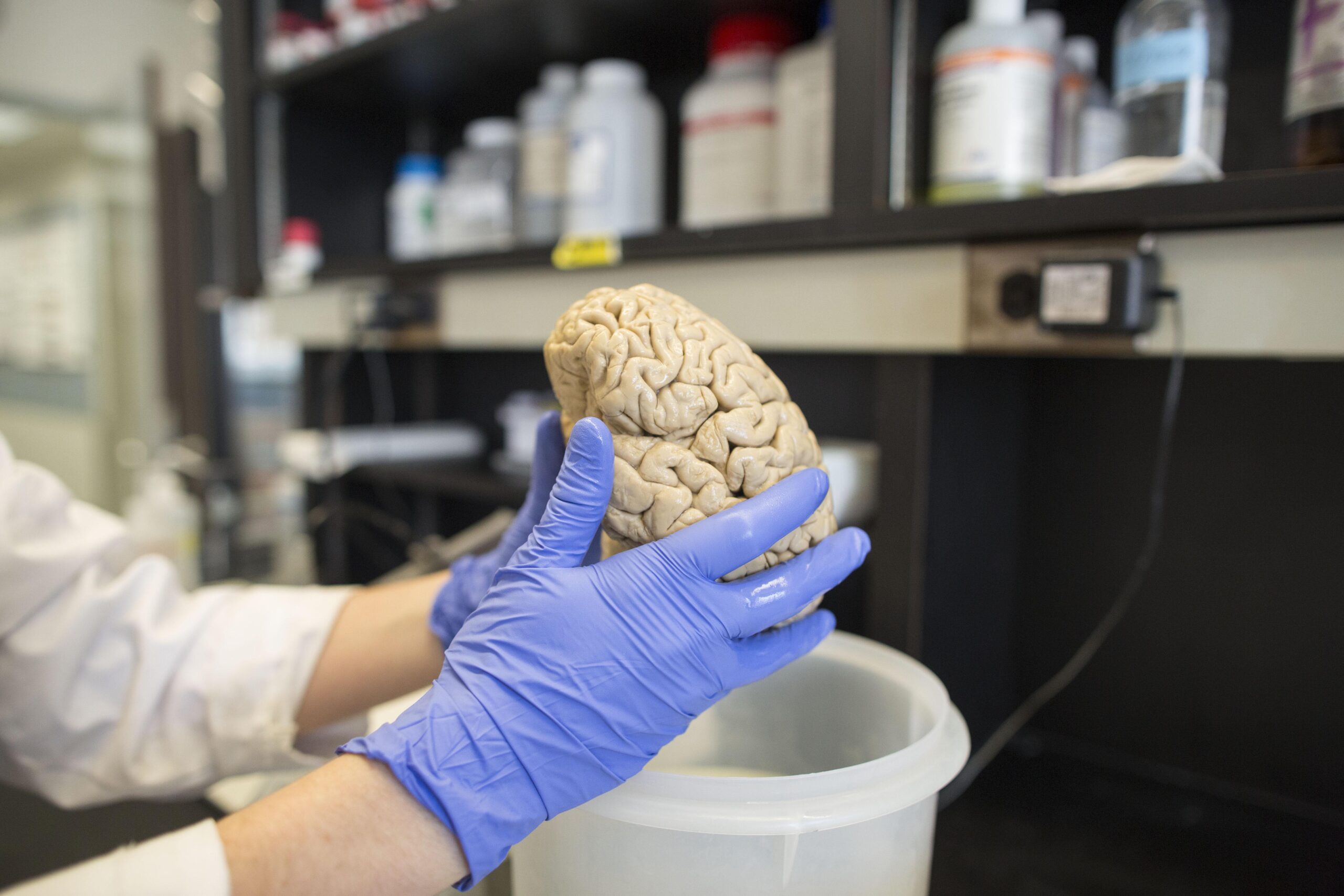A Wisconsin doctor and podcast host said a recent study that suggests a sharp rise in the number of dementia cases should shake health care providers and policymakers into considering large-scale changes.
The study published in Nature Medicine projects that by 2060, about 1 million people per year will develop the disease, and it means more than 2 in 5 people over the age of 55 are projected to develop the disease in the U.S.
“There is going to be a felt impact,” Dr. Nathaniel Chin, medical director for the Wisconsin Alzheimer’s Disease Research Center at the University of Wisconsin School of Medicine and Public Health, said on WPR’s “Wisconsin Today.”
Stay informed on the latest news
Sign up for WPR’s email newsletter.
The increase is primarily due to a growing aging population in this country. The study found that adults older than 55 had a 42 percent lifetime risk of developing dementia.
As host of the “Dementia Matters” podcast, which explores the treatment and care of people living with dementia, Chin is concerned with how the sharp increase in dementia patients will affect the health care system.
“It really does affect our society [and] our culture, and so in order to address it, it can’t just be done at the clinic level. It has to be more upstream than that,” Chin said.
But he added that although the results are shocking and should be a “wake-up call” for health care providers and policy makers, there is some good news.
A 2024 report from The Lancet Commission shows there are 14 semi-modifiable factors in people’s lives that greatly reduce the risk of developing dementia and 45 percent of cases are preventable.
Chin joined “Wisconsin Today” to discuss the new study and tactics for preventing the disease.
The following interview was edited for brevity and clarity.
Kate Archer Kent: The study shows this really sobering, significant increase in the risk of developing dementia, referring to an umbrella term that includes things like Alzheimer’s disease and Lewy body dementia. What in this study surprised you?
Dr. Nathaniel Chin: Sobering is the right word. I think the final result is what really caught a lot of us off guard. They expect 1 million new cases of dementia, whereas currently we think there’s about 500,000 new cases of dementia every year.
KAK: Why such a steep increase in what we thought there was?
NC: Well, the study was done slightly differently than the studies that led to that prior number. It is geographically diverse from four communities in Minnesota, North Carolina, Mississippi and Maryland. But they’re also socioeconomically diverse participants, as well as racially diverse. And the researchers, they follow these communities, these participants. They have them come in for visits, but they also call them and check in on them. And they check in on their health records.
KAK: What is striking as well is the elevated risk for Black Americans, in particular. What did the study find?
NC: We have known that certain communities of color, particularly African American, Hispanic, Latino and Native American communities, they’re at higher risk of developing Alzheimer’s disease and other forms of dementia.
The researchers actually said it is almost three times more likely, as you get older, to develop dementia for these communities. So that reinforces that there are other factors here that are contributing to dementia, and that this is really what they call the public health wake-up call, that we really need to be looking at these social determinants of health.
KAK: What do you see as the big challenges ahead for Wisconsin families and the state in caring for the future population of dementia patients?
NC: This is pretty scary because this is going to affect us in so many ways and in ways that we haven’t really thought of.
At a family level, are they prepared to help care for loved ones and friends and to keep them at home or to provide some services?
Are the health care services ready for this: primary care, specialty care, physical therapy, occupational therapy, urgent care, emergency care and the hospital?
We do not currently have enough assisted living and skilled facilities that provide temporary medical assistance. We don’t have the current staff to help provide this level of assisted care. So, are we prepared for the workforce?
What about social services? What about our county services? What about our social workers, even elderly law attorneys?
That’s why I think a lot of the people, health care providers and policymakers, saw the study and said we really have to make structural changes if we really want to address this.
KAK: What can be done in the way of prevention?
NC: This is where things are more optimistic and more exciting. In 2024, The Lancet Commission came out with a report that said up to 45 percent of cases of dementia are potentially preventable, meaning there are modifiable factors that if we addressed everything, we could actually have prevented that case of dementia.
They listed 14 factors … reducing diabetes, managing cholesterol, minimizing hypertension, not smoking, reducing obesity, reducing air pollution, preventing head injuries, preventing or treating depression, physical activity, minimizing alcohol, higher education or at least keeping your brain stimulated, preventing and addressing hearing loss, addressing visual loss and increasing your social engagement.
KAK: It seems those factors really contribute to overall health, as well.
NC: That’s the beauty of it. That’s what our patients really enjoy, is that you address these factors, you’re improving your quality of life. Yes, you can still address these 14 factors and potentially develop symptoms but you might still feel better in other areas of your life.
There are different mechanisms or ways that these 14 factors might be helping you in preventing dementia.
It could be addressing blood vessel disease, which is a common factor. It could be reducing stress and inflammation. Or it can actually be building your cognitive reserve, this idea that you’re building a buffer on your brain and so even with changes in the brain like Alzheimer’s, your brain kind of pushes back and says you can handle more of those changes.





